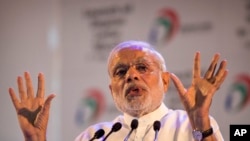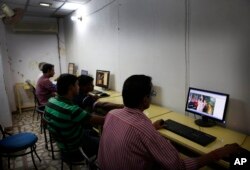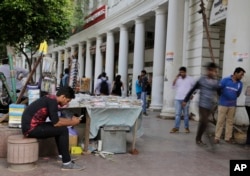Progress of an ambitious project to provide Internet access to all of India by 2019 still faces many challenges as Prime Minister Narendra Modi hits his two year mark in office.
Digital India, a broad initiative aimed at connecting citizens and promoting digital literacy across the country, as well as digitizing government records, was a big part of Modi's campaign promise to "take the nation forward - digitally, and economically".
An optimistic Modi government moved up a deadline to install the most basic foundation of the program, a network of optical fiber, to December 2016, but data from the department of electronics and information technology suggests this may be unrealistic, as the vast majority of cables have yet to be installed.
In 2014, just 18 percent of Indians were Internet users, according to the World Bank; however, sites such as Internet Live Stats suggest this percentage may have increased to as much as 35 percent by 2016.
But the government has a long road ahead to digitize their population of more than one billion citizens.
Financing purchases of equipment, such as computers and wireless routers for government offices, as well as installing fiber optic cables, is one challenge. But educating the population is another persistent one.
Aakash Solanki, a University of Chicago fellow working in the education department of the state government of Haryana, says one cannot happen without the other.
"All of this work kind of happens [in parallel]," he told VOA. "The Indian government is faced with this challenge of having to do pretty much everything at once."
The main problem Solanki notes in his local work, however, is the lack of digital literacy among government workers themselves. Both in the context of digitizing government records and of creating education policy to provide citizens the skills to use new technology, digital literacy is lacking. He says many of the government workers tasked with creating policy are in their 50s and do not themselves know how to use technology they are tasked with teaching.
"The government needs to help itself, right from the topmost officers down to the clerks there is a massive skills gap," he said. "If they themselves are not equipped with the bare bones, bare minimum digital literacy then how will the state do its job?"
The gap
The gap between federal and state decisions is another hindrance to the program. The majority of funding for education and digital literacy programs is provided by the federal government; however, individual states must pitch their budget requests based on student populations and the individual state's performance in the past year. India's central government approves or adjusts each state's budget, and states that show little improvement in past years will receive less funding.
But the implementation of technology, such as the installation of fiber optic cables that would bring Internet service even to remote villages, is the burden of the individual state. Poorer states, such as Haryana, may find hiring and paying contractors a difficult or low-priority task.
Offices in Haryana, among other states, have left government computers in their boxes to collect dust because they don't yet have the means to connect them to the Internet.
Some other states, however, have Internet user rates starkly different from the national average. The southern state of Kerala was declared India's "first digitized state" by president Pranab Mukherjee in February.
Broadband
The state's Digital Employment Campaign was endorsed by the president, who declared it "will help the people to use Internet to avail of government and private services in a secure manner". The state is currently boasting broadband connection in all its villages, and 95 percent mobile connectivity.
Though Modi's government presents Kerala as a role model for all Indian states, it is unlikely that its high success rates will be paralleled in the near future.
Solanki is confident that digitization of India, in some capacity "will inevitably happen because everybody is on to it." But whether citizens across the country will see similar results, "those are completely different conversations."










